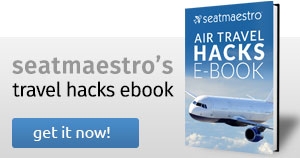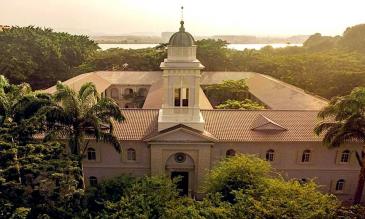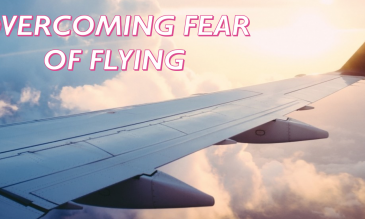Does Air Canada impose age restrictions for infants?
Infants under 7 days old are not accepted for travel on Air Canada flights.
Infants at least 7 days old may travel only accompanied on the same flight and in the same compartment by an adult at least 16 years of age.
An adult passenger occupying the same or adjacent seat occupied by the infant may travel with only one infant on Air Canada flights.
When does Air Canada require a ticket purchase for my baby?
Air Canada requires you to purchase a ticket for your baby when:
- Your child has reached his/her second birthday before the commencement of travel, for the entire trip, or during your trip, for the returning flight.
- You and your child will be traveling internationally, regardless of your baby’s age, and whether or not the baby will be sitting on your lap.
If an infant reaches his/her second birthday between the departing flight and the return flight of an international itinerary, the fare can be determined from one of the following two options:
- You can choose to reserve a seat for your infant on both flights, and the child will pay the full published child fare for the entire trip.
- You can choose to travel with your infant on lap on the departing flight, and the child will pay the infant fare on departure and the child fare on return.
Does Air Canada offer discounts for infants or children traveling on domestic or international flights?
You may travel with your infant on your lap until his/her second birthday, free of charge, on flights within Canada. Also, there is no charge when an infant on lap travels between Canada and the U.S., but taxes apply.
Children under 2 years old, occupying a seat, pay the applicable adult fare when traveling within Canada and between Canada and the U.S. (no discount).
For international flights, Air Canada charges the infant fare (10% of the adult fare) when the child is traveling in the parent’s lap, and the child fare applies when a seat is reserved for an infant and a child restraint device is used. The discount does not apply to fees, taxes, charges, and surcharges.
What is Air Canada policy on checking-in and baggage allowance when traveling with a child?
When traveling with an infant or child, you may choose the way you want to check in. In addition to the option of checking in with an Air Canada agent at the ticket counter, Web Check-in, Mobile Check-in, and Self-Service Kiosk Check-in are available when traveling with your infant or child. However, boarding passes must be printed at the airport if you check in using a mobile device.
A child or infant’s baggage allowance is over and above the baggage allowance of the parent. For children and infants occupying a seat, the normal carry-on baggage allowance applies. If the infant does not occupy a seat (infant on lap), the accompanying adult may carry on board one standard carry-on bag for the infant’s belongings, in addition to the normal carry-on allowance.
On Air Canada, Air Canada Express, and Air Canada Rouge flights, infants on lap have a checked baggage allowance based on the itinerary. You can use Air Canada Checked Baggage Calculator to find your baby’s baggage allowance and any applicable charges.
For each infant or child, two of the following items are accepted free of charge:
- One stroller – a stroller with a collapsed diameter at most 25.5 cm (10 in) and a length not exceeding 92 cm (36 in) may be checked at the gate and will be delivered at the aircraft door at every point in your journey; large strollers must be checked at the baggage counter and will be delivered to the arrivals baggage hall at the final destination. Because large strollers are also subject to space limitations, there is a risk that they cannot be accommodated in the aircraft.
- One car seat or booster seat – to be checked.
- One playpen – may be substituted for either a stroller or car seat.
Infant on Lap
Air Canada allows children under 2 years old to travel on an adult’s lap to any destination, domestic or international. Because child restraint devices are not permitted in the Signature Class, infants cannot occupy their own seat and must travel as an infant on lap.
If you’re traveling with an infant in Economy Class on some aircraft¹, you may request a bassinet in advance of travel by contacting Air Canada Reservations. However, availability cannot be confirmed until the time of your flight’s departure. Bassinets are assigned on a first-come, first-served basis. For safety reasons, bassinets can be used only for infants weighing less than 12 kg (25 lbs) who are unable to sit upright.
¹Airbus A330 300, Boeing B777 200LR (77L), Boeing B777 300ER (77W) International Layout 1, Boeing B777 300ER (77W) International Layout 2, Boeing B787-8 (788) International, Boeing B787-9 (789) International.
Infants Traveling in Their Own Seat
If you prefer your child under 2 years old to travel in his/her own seat, you must call Air Canada Reservations to book your travel. An infant for whom a seat is purchased must be properly secured in an approved child restraint device.
Child Restraint Devices
Whenever the seat belt sign is on, the infant must be properly secured in an approved child restraint device. Only an approved child restraint device can be used on board Air Canada aircraft. Air Canada is bound by Transport Canada regulations with regards to acceptable child restraint devices (with the exception of the CARES child restraint device). Accepted child restraint devices must meet the following requirements:
- Models manufactured in Canada must bear a label stating that “This child restraint system conforms to all applicable Canadian Motor Vehicle Safety Standards”, or the National Safety Mark, indicating the number of the standard(s) to which the restraint device conforms: CMVSS 213 for a child restraint device or 213.1 for an infant restraint device.
- Models manufactured in the U.S. must bear the label “This child restraint system conforms to all applicable Federal Motor Vehicle Safety Standards” and, in red lettering, this additional label “This restraint is certified for use in motor vehicles and aircraft.”
- Foreign-built car seats must adhere to Transport Canada regulations.
- The CARES child restraint device, designed for children ages 1 to 4, weighing between 10-20 kg (22-44 lbs), whose height is 100 cm (40 inches) or less and who are capable of sitting upright, must display the following:
- Legible CARES label with approval standards (FAA approved in accordance with 14 CFR 21.305 (d) and approved for aircraft use only).
- Part number 4082-1 on label.
The following child restraint devices are not accepted for in-flight use: booster seats, belly loops, vest or harness type devices, Little Cargo seats (regardless of any claims from the manufacturer that they are approved for use in aircraft).
A combination system (i.e. a child restraint system and a booster cushion) is accepted for in-flight use provided that all labeling requirements are met. It must be used as a child restraint system with the internal harness system installed, and cannot be used in-flight as a booster cushion, with the internal harness system removed. Pouch-type infant carriers (e.g. Baby Hawk Ergo or Snugli) are allowed for use on Air Canada flights, except whenever the seat belt sign is on or during take-off, landing, and taxiing on the runway.
All approved devices must be installed according to the directions on the device and secured using the seat belt fitted on the aircraft seat. They must fit between the armrests of the seat. For safety reasons, child restraint devices (including CARES child restraint devices) are not permitted in Signature Class at any time.
Toddlers
Children who are 2 years or older must have a ticket and a reserved seat when traveling on an Air Canada flight. The use of an approved child restraint device is optional. Children pay the applicable adult fare for travel within Canada and between Canada and the U.S. (no discount). Air Canada offers discounted tickets only for children between the ages of 2 and 11 years who are traveling internationally. A child traveling on an international flight will pay the child fare until his/her 12th birthday and the applicable adult fare after his/her 12th birthday.
The following travel beds for kids are not accepted for in-flight use: BedBox, Plane Pal, Fly-Tot, Fly LegsUp, Flyebaby.
In Signature Class, a child aged 2 to 7 must be seated directly in front of, directly behind, or in an adjacent seat facing the accompanying adult. When booking travel with young children in Signature Class, call Air Canada Reservations to ensure the availability of appropriate seating.
Amenities
For domestic and international departures from Toronto-Pearson (YYZ) and Montreal-Trudeau (YUL) airports and for domestic departures from Vancouver, Edmonton, and Calgary International airports, Air Canada offers Family Check-in for families with kids under age 6. At Family Check-in, kids may receive a special luggage tag.
Families with kids under age 6 board early, before general boarding (between Boarding zones 2 and 3) thus having extra time to store belongings and settle in.
Air Canada offers Family Seating to make sure you and your kids under age 14 sit close to each other at no extra charge by assigning generic seats in proximity to each other within 48 hours after the ticket is issued. You can then review your seat assignment in My Bookings and validate or change your seat assignment. If no adult is seated in close proximity to a child, you may contact Air Canada Reservations to change your booking to another flight or cancel your trip, at no extra charge.
Special meals for infants and children are available on all international flights and in Business Class, Premium Economy, and Premium Rouge on domestic flights and must be ordered at least 18 hours before departure. Baby formula, breast milk, juice, and baby food (in small containers) are permitted in carry-on baggage, which you should bring in a small cooler because onboard refrigeration may not always be available on all aircraft types.
On Air Canada and Air Canada Rouge flights within Canada, coloring books are offered to keep kids entertained. On flights to Europe, Asia, Australia, or South America, kids are offered a backpack with an activity book and a crayon kit.

 En
En Es
Es Fr
Fr







